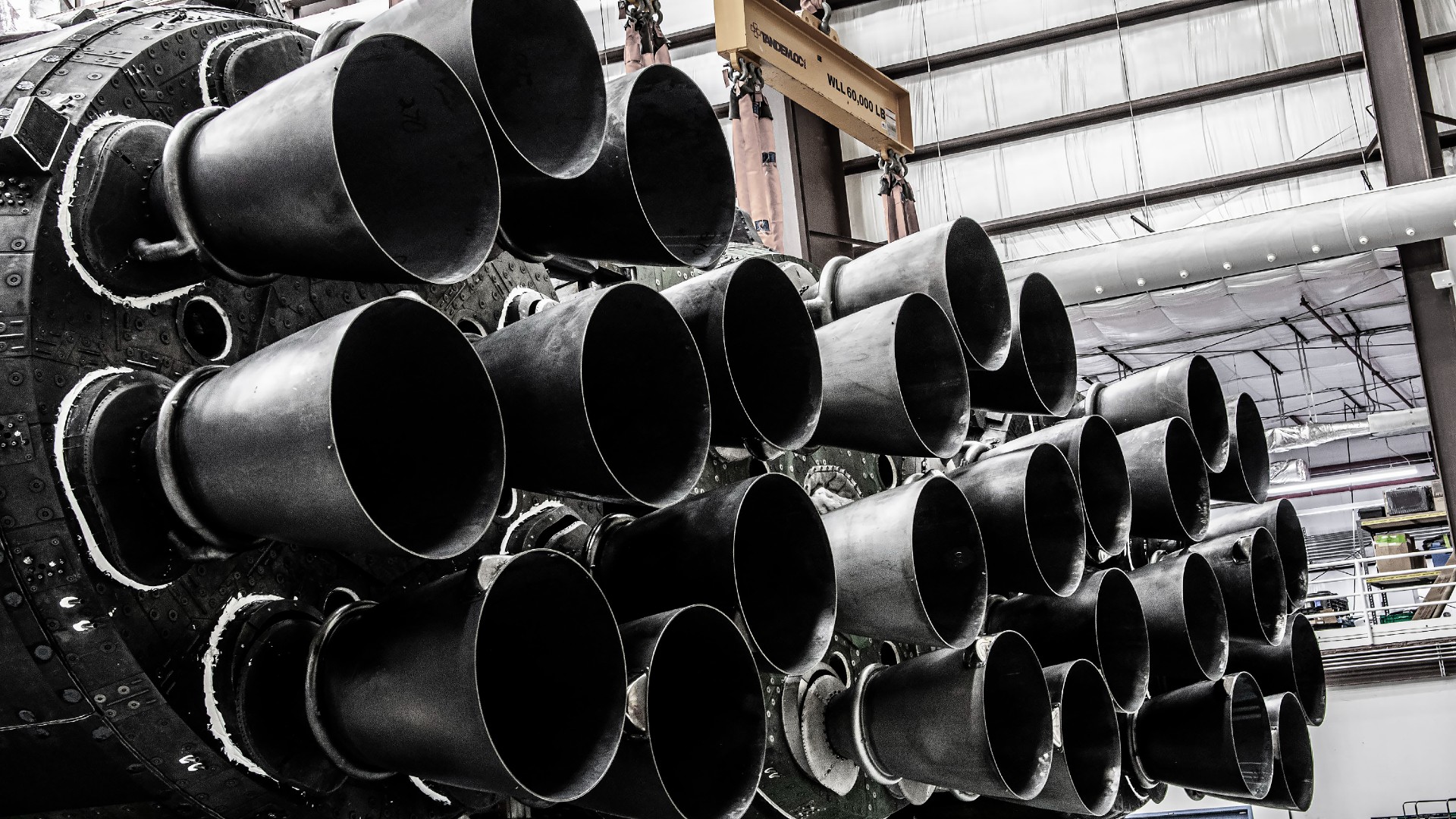SpaceX Falcon Heavy shows off its 27 engines ahead of July 26 launch (photo)
Falcon Heavy's 27 Merlin engines are looking crisp ahead of the rocket's upcoming launch.

A new photo from SpaceX highlights the immense power of the engines of a sleeping Falcon Heavy rocket.
The next Falcon Heavy is scheduled to launch the Jupiter 3/EchoStar 24 mission on Wednesday (July 26), during which it will carry the world's largest private communications satellite to a geostationary orbit.
Ahead of the launch, SpaceX has joined the rocket's three boosters together in the company's hangar at Launch Complex-39A (LC-39A), at NASA's Kennedy Space Center, in Florida. SpaceX posted a photo to their Twitter account, which features a close-up of the 27 Merlin rocket engines mounted at Falcon Heavy's business end.
Related: SpaceX Falcon Heavy lights up the night sky in these incredible launch photos
Combined, Falcon Heavy's engines are capable or producing over 5 million pounds force (22,241 kilonewtons) of thrust at liftoff, and can launch almost 60 thousand pounds (27,215 kilograms) to geosynchronous orbit.
Depending on mission parameters, Falcon Heavy is designed for full reuse, but launches with the option for booster expandability in the event a payload's mass or orbital specifications require the rocket expel more fuel than required for its safe return.
For the Jupiter 3/EchoStar 24 mission, the rocket's two side boosters are expected to perform boost-back burns to return to SpaceX's Landing Zones 1 and 2 at Cape Canaveral, approximately 8 or 9 minutes after launch.
Get the Space.com Newsletter
Breaking space news, the latest updates on rocket launches, skywatching events and more!
The core booster, however, will not attempt a sea landing on one of SpaceX's autonomous drone ships, as is typical for Falcon 9 and Falcon Heavy launches. Instead, the core stage will use its fuel reserves to place the hefty Jupiter 3 in its proper orbit.
Maxar's new Jupiter 3 relay is the company's largest communication satellite ever. It will join others in the Hughes Jupiter fleet to provide internet and other broadband services to North and South America. Once in orbit, Jupiter 3 is expected to double the fleet's existing bandwidth capabilities.
Falcon Heavy is expected to liftoff with Jupiter 3/EchoStar 24 at 11:04 p.m. EDT (1504 GMT) on Wednesday, July 26, from LC-39A at NASA's Kennedy Space Center.
Join our Space Forums to keep talking space on the latest missions, night sky and more! And if you have a news tip, correction or comment, let us know at: community@space.com.

Josh Dinner is the Staff Writer for Spaceflight at Space.com. He is a writer and photographer with a passion for science and space exploration, and has been working the space beat since 2016. Josh has covered the evolution of NASA's commercial spaceflight partnerships and crewed missions from the Space Coast, as well as NASA science missions and more. He also enjoys building 1:144-scale model rockets and human-flown spacecraft. Find some of Josh's launch photography on Instagram and his website, and follow him on X, where he mostly posts in haiku.









